


Davide Pettenella
This chapter summarizes main findings and conclusions of seven country case studies (Brazil, Italy, Mali, Mexico, Romania, United Republic of Tanzania and Thailand) prepared in 2001-2002 with a view to providing practical examples of cross-sectoral policy impacts in different political, legal, economic, environmental and social contexts (Table 2.1). Figure 2.1 shows GDP and forest cover per capita in the selected countries. Mali and Tanzania could be classified as low income and low forest cover per capita countries; on the other hand, Mexico, Romania and Thailand are medium income and low forest cover per capita countries. Brazil is a medium income country characterized by a high forest cover per capita. Finally, Italy is to be considered as a high income and a low forest cover per capita country.
Table 2.1 - Socio-economic and biophysical characteristics
Country |
Population |
Rural population(%) |
GDP/capita(US$) |
Life |
Illiteracy level (%) |
Forest area(000 ha) |
Annual
change |
Forest protected area (% of forest area) |
|
Brazil |
168.2 |
19 |
3580 |
67.5 |
15 |
543905 |
-0.4 |
17 |
|
Italy |
57.7 |
33 |
20160 |
78.4 |
2 |
10003 |
0.3 |
11 |
|
Mali |
10.8 |
73 |
240 |
51.2 |
68 |
13186 |
-0.7 |
7 |
|
Mexico |
98 |
26 |
5080 |
72.4 |
9 |
55205 |
-1.1 |
4 |
|
Romania |
22 |
45 |
1670 |
69.8 |
2 |
6448 |
0.2 |
4 |
|
Tanzania |
33.7 |
70 |
280 |
51.1 |
24 |
38811 |
-0.7 |
14 |
|
Thailand |
60.7 |
81 |
2010 |
69.9 |
5 |
14762 |
-0.2 |
23 |
Sources: World Bank Development Report 2002 and FAO Forest Resources Assessment 2000.
The case studies present a diversified picture of linkages between forest and external policies. Different problems and opportunities exist in improving cross-sectoral policy formulation and coordination. The chapter is a summary review of the individual case studies elaborated by the following authors: Abrudan, 2002; Humberto and do Prado, 2002; Konaté, 2002; Mingsarn, and Rutherford, 2002; Monela, 2002; Pettenella et al. 2002a, 2002b; and Sosa Cedillo, 2002.
Figure 2.1 - Country GDP and forest cover per capita
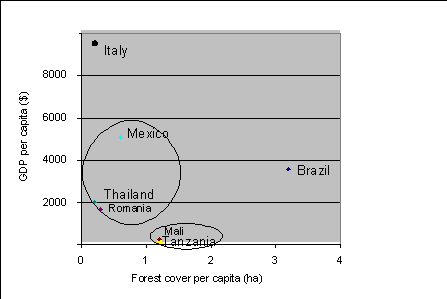
The country case studies have taken different analytical approaches or focuses. Three broad categories can be identified for the sake of comparison (Figure 2.2):
• Some reports provide an in-depth analysis of the problems and constraints faced by the forest sector when confronted with macroeconomic and external sectoral policies. Other studies provide also an examination of possible ways to reduce policy failures and improve policy coordination.
• The process of decentralization and devolution is affecting almost all the countries and this may explain why some reports are considering in detail the problems of vertical integration, i.e. coordination among the international, national and local levels of planning. In others, attention is given to the links among policies designed and implemented at the territorial level.
• Several case studies focus on the linkages among public policies, while others consider the conflicting relations between market development forces and forest protection policies.
Table 2.2 shows how the attention given to institutional aspects, scale and time horizon of analysis varies among case studies.
Figure 2.2 - Main focus of cross-sectoral linkages analysis
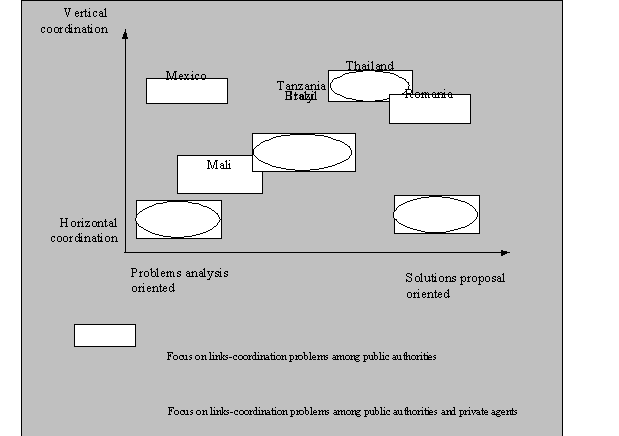
Table 2.2 - Characteristics of country case study approach
|
Country |
Description of national institutional setting |
Local case studies |
Time span considered (main focus) |
|
Brazil |
No |
Yes (Amazonian region) |
1980-99 |
|
Italy |
Yes |
Yes (three northeast mountain provinces) |
1950-… |
|
Mali |
Yes |
Yes (two northern and southern regions) |
1985-… |
|
Mexico |
Yes (detailed) |
Yes (Chihuahua State) |
1995-… |
|
Romania |
Yes (detailed) |
No |
1990-… |
|
Thailand |
Yes |
Yes (northern mountain region) |
End of 1980s-… |
|
Tanzania |
No |
Yes (Miombo woodlands) |
1970-… |
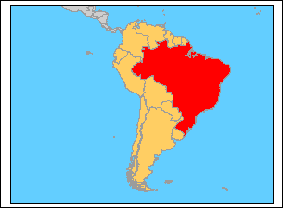
| MAIN SOCIO-ECONOMIC INDICATORS Population: 168.2 million Population per sq. km: 19.9 Population growth: 1.3% Life expectancy (1999): 67.5 years Poverty (% population below 1$/day): 11.6% GDP per capita: 3,580 US$ GDP: 529.4 billion US$ |
| MAIN BIO-PHYSICAL AND FOREST INDICATORS Surface area: 845.6 million hectares Forest cover: 543.9 million hectares % of land area: 64.3% Forest area per capita: 3.2 hectares Deforestation (annual change 1990-2000): -0.4% Average growing stock: 131 cm/ha Removals: 235.4 million cm Import: 1,003 million US $ Export: 3,218 million US $ |
Brazil has the world’s largest area of tropical rainforests. Forests cover around two-thirds of Brazil’s land area. The country’s forest classes can largely be divided into Amazon, Atlantic and araucaria forests. The humid tropical Amazon rainforests in the northwestern half of the country account for 95 percent of Brazil’s forest area. The Amazon forests comprise large areas of broad-leaved forests, including those growing in a variety of dry land and alluvial zones, and lowland and sub-mountain forests. To the south of the Amazon are extensive areas of Cerrado (savannah-type) woodlands. Brazil has around 5 million hectares of forest plantations, based on pine and Eucalyptus spp., and has more than 30 million ha of protected areas including many state parks and reserves.
Brazil is the world’s fifth-largest industrial wood producer and the largest producer of tropical wood. It harvests significant quantities of both hardwoods and softwoods with almost half domestic wood production being used in the sawmilling sector and a large quantity of the remainder being used to produce pulp and paper.
The study discusses the influences of external policies on the deforestation of the Brazilian Amazon forest through a statistical analysis of time-series data from 1980 to 1999. The following main external policies with impacts on the forest frontier are identified:
• population policy, in particular re-settlement programmes without adequate protection of indigenous people’s rights;
• agriculture policy providing financial incentives for forest clearing and conversion to farmland for cattle breeding;
• infrastructure policies, in particular road construction;
• tax exemption policies for new economic activities;
• policies related to land use rights regulation.
Logging and the development of the wood industry capacity were also other important internal factors with more than 90 percent of the wood production coming from deforested areas.
Prior to the sixties, exploitation of the Amazon region involved mainly extractive goods and sparse agricultural activities. In 1966, livestock activities were encouraged in the region by governmental policies like “Operation Amazonia”. During the 1970s, the federal government began ambitious programmes of road construction, mineral exploitation and expansion of crop and livestock activities on forest areas. These measures generated a process of rapid urbanization with significant migration flows from the southern parts of the country resulting in increased deforestation and forest cover degradation.
In 1988-89, important policy measures were taken by the government in the so-called “Our nature programme” to stem deforestation and to deal with related environmental issues (Box 2.1).
|
Box 2.1 – Main measures of “Our nature programme” - Suspension of fiscal incentives of the
Investment Fund for the Amazon in areas of primary tropical forest. |
Nevertheless, the results of 1994-95 satellite monitoring of deforestation showed an increase in deforestation rates after a period of declining rates since 1990. The government then clearly recognized the need to adopt a wider set of measures and established in 1995 a “Natural resource chamber” to revise forestry policies under the coordination of the Ministry of the Environment. A “positive forestry agenda” for the Amazon was then initiated with the aim of adopting a set of pro-active and market-oriented measures towards SFM. The main measures were:
• establishment in 1995 of a “Green protocol” linking
public credit lines to environmental standards;
•
participation in the process of criteria and indicators for the sustainable
management of the Amazon Tropical Forest (Tarapoto Process);
• establishment in 1995 (first by Government of the State
of Paraná) of a “green tax” as an incentive to maintain municipal forest
areas;
• provisional Measure of July 1996 modifying
the Brazilian Forest Code, aiming among other things at limiting alternative
use of land properties covered by forests;
•
introduction of compulsory forest replacement (Normative Instruction No.
001/96 of the Ministry of the Environment);
•
establishment of a new rural land property taxation considering as non-taxable
areas a) permanent conservation areas, b) legal forest reserve areas and c)
areas of ecological interest;
• as part of the
agrarian reform policy, reduction of rural family settlements, establishment
of related environmental performance indicators, prohibition of settlement in
natural forest area or improved control of illegal holders of rural
estates;
• organizational and administrative reform of
the Ministry of the Environment in 1999, leading to the creation of the
Secretariat of Biodiversity and Forests including a Forestry Directorate.
Likewise a Forestry Directorate was also created in IBAMA;
• efforts towards certification of forest harvesting
under the Forest Stewardship Council progressed;
•
launching in April 2000 of the National Forest Programme, one of the main
objectives of which was the creation of an expanded system of public
conservation areas.
A system of forest concessions imposing a series of charges for harvesting in public production forests has recently been proposed by the government, with a view to making SFM more profitable or more competitive with timber from deforested areas.

| MAIN SOCIO-ECONOMIC INDICATORS Population: 57.7 million Population per sq. km: 191.5 Population growth: 0.1% Life expectancy (1999): 78.4 years GDP per capita: 20,160 US$ GDP: 1.1 trillion US$ |
| MAIN BIO-PHYSICAL AND FOREST INDICATORS Surface area: 29.4 million hectares Forest cover: 10.0 million hectares % of land area: 34 % Forest area per capita: 0.2 hectares Deforestation (annual change 1990-2000): 0.3% Average growing stock: 145 cm/ha Removals: 9,3 million cm Import: 7,859 million US $ Export: 2,741 million US $ |
Italy occupies a long peninsula stretching from the Alps into the central Mediterranean Sea with a mountainous "backbone" where the forests are mostly located. Forest and other wooded land account for less than one-third of the land area, half of which is high forest and the rest coppice often of even quality. Because of its long north-south extension and wide range of altitudes, a large variety of forest types as well as flora and fauna are found. Broadleaved species make up two thirds of the volume of growing stock, the principal species being beech, deciduous and evergreen oaks, poplars and chestnut. The main coniferous species is pine, Norway spruce and European larch. Three-fifths of the forest are available for wood supply. Two-fifths are not available, partly for conservation and partly for economic reasons. Virtually all forest is semi-natural, with some areas of plantations. Two-thirds of Italian forests are privately owned, mostly by individuals in smallholdings; one-third is publicly owned, mainly by communes and municipalities. Non-wood forest products are of importance for the rural economy. Italy is a major consumer, producer and trader of forest products in Europe. Its share of European paper and wood-based panel production is nearly 10 percent.
The roles of the forestry sector and related sectors’ policies are compared in three northeastern mountain provinces (Bolzano, Trento and Belluno). Three key-variables are identified: policies in non-forest related sectors (in particular those of the European Union Common Agricultural Policy), land tenure systems, public administration structures and the involvement of different interest groups in the decision-making process.
According to the Constitution, regional authorities have the responsibility of policy decision-making and implementation in the agroforestry sector. During the last 25 years, the implementation of decentralization has characterized institutional changes in the forestry sector and focused efforts of the Ministry of Agriculture and Forest Policy. Limited attention has been paid to multilevel development coordination between local, national, regional (supranational) and international levels. As a result, there is no comprehensive national forest strategy clearly coordinated with other sectoral policies but a ‘puzzle’ of 21 different regional approaches in forest policy.
External policy influences differ from one region to the other and from one sector to the other and responses from landowners to rural development policies are strongly influenced by the prevailing patterns of land fragmentation. The land tenure regime represents a key factor for any policy related to the development of local entrepreneurship in mountain areas. The relative small size of property held by landowners represents a significant constraint on the implementation of a multifunctional and coordinated use of land resources. The establishment of minimum land areas is important to be able to implement multifunctional and coordinated management of land resources in mountain areas. It is also essential to identify niche markets and competitive advantages for the production of non-wood forest products. Vertical integration between forest land management and woodworking industry activities needs to be strengthened as well as linkages between production and consumption of local wood
Mountain forestry activities are strategically important as they provide a number of environmental services in addition to the production of wood and other raw materials. Several stakeholders with different rights and obligations are involved in the management of forest lands. The increasing demand of society for environmental services from forests needs to be considered by land managers with the support of public authorities whenever market forces are not sufficient or adequate.
Examples of institutional arrangements to promote stakeholder involvement and coordination are presented: State-Regions Conference (Conferenza Stato-Regioni) for multilevel vertical coordination. As to horizontal coordination, it occurs within organizations and between different public administrations and public and private actors. An interesting example is the Forest Round Table (Tavolo Forestale) in Trento, where representatives of interest groups meet periodically to discuss forestry initiatives and problems at the provincial level. The Local Action Groups, co-financed by the European Commission, are another example. They were established in 1993 with the aim of channelling financial and human resources to relevant small-scale rural development investment in marginal areas. Compared with the traditional state or province-centred coordination approach, they are more open to private actors and mainly work in partnership.
Figure 2.3 showed that non-forest policies prevail and have often a greater impact on the condition and use of forests than forest policies. For example, forest management activities are very sensitive to labour policies: under conditions of full employment of local workers - as in the case study areas - forest activities can be maintained only through the employment of immigrant forest workers. However, unlike those in the agriculture sector, forest activities are very specific, highly specialized and seasonal. In order to maintain a minimum level of forest activities, improved coordination between forest policies and labour policies was recommended, including recruitment and training of an immigrant workforce.
In conclusion, local politicians and decision-makers tend to give forest resources only a marginal role. Non-forest sectors are perceived as being more important in terms of achieving a consensus among local people. In a context of full employment and no problems with importing wood raw materials, the implicit policy action is laisser-faire. Policy actions are limited to the implementation of rules to protect and prevent over-cutting or misuse of forest resources.
Figure 2.3 -
Intermediate and final impacts of non-forest policies
Non-forest policies Intermediate impacts Final
impacts
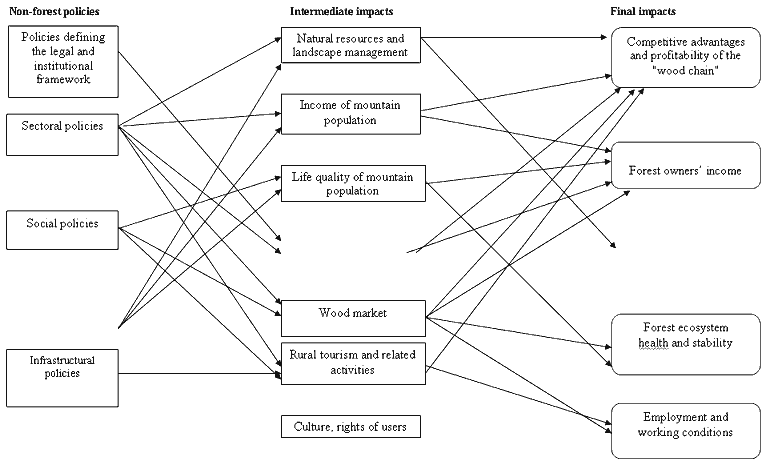
Mali
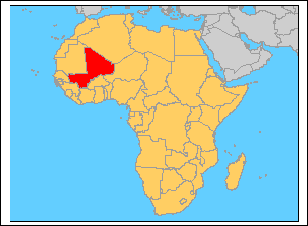
Mali is lightly forested with around 11 percent forest cover and an additional 14 percent of other wooded land. Mali's vegetation types extend from Sudanian-Guinean in the south, through Sudanian and Sahelian zones, to Saharan desert occupying most of the northern half of the country. Extended drought and desertification are major problems in Mali. Closed forests are almost exclusively patches of gallery forest in riparian areas and comprise a mix of semi-deciduous forest and savannah species.
| MAIN SOCIO-ECONOMIC INDICATORS Population: 10.8 million Population per sq. km (1997): 9 Population growth: 2.9 % Life expectancy (1998): 51.2 years Poverty (% population below 1$/day): 72.8% GDP per capita: 240 US$ GDP: 2.3 billion US$ |
Mali's wooded areas are dominated by savannah, with Isoberlinia doka characterizing the Guinean-type savannah, Parkia biglobosa representative of Sudanian-type and Acacia spp. scrub representative of Sahelian vegetation.
| MAIN BIO-PHYSICAL AND FOREST INDICATORS Surface area: 122.0 million hectares Forest cover: 13.1 million hectares % of land area: 10.8 % Forest area per capita: 1.2 hectares Deforestation (annual change 1990-2000): -0.72% Average growing stock: 22 cm/ha Removals: 5.1 million cm Import: 8.7 million US $ Export: 1.6 million US $ |
Mali has established modest areas of plantation forest with the most common species being Eucalyptus spp. and Gmelina arborea. Mali has extensive land areas in parks and reserves.
Wood is the major fuel and energy source in Mali. There are no large-scale forest industries in the country.
The case study focuses on impacts of different national development policies on the traditional forestry sector. Successful cases of sound policy implementation are examined and recommendations are made to intensify positive and minimize negative effects. Results of environmental impact assessment of three regional projects are presented (Box 2.2)
Forest resources in Mali are under a process of rapid degradation. The demographic pressure leading to a growing demand for fuelwood and new farmland have been identified as the two most relevant causes of deforestation. The combination of extensive agricultural methods, still in use in large areas of the country, and the lack of an appropriate policy and legal framework to protect efficiently natural resources result in their increasing depletion. Arid climate conditions affecting the country represent an important constraint to the development of the forestry sector.
The analysis of the main macroeconomic polices showed that rural development policies in combination with some fiscal measures have resulted in some indirect positive effects for the forestry sector. This is mostly due to an amelioration of the tax system and the consequent redistribution of income to the population. On the other hand, negative effects emerged such as the halt in forestry personnel recruitment and the deteriorating forest road system. Cross-sectoral issues are examined at the macroeconomic level where effects of the structural adjustments policy on rural poverty and on capacity building act as driving forces. The institutions expected to design the structural adjustments policy focus their attention on reducing the impact of development policies on poverty, mainly by improving the quantitative level of agriculture production. Little attention is given to aspects which relate to a sound overall management of natural resources. Other general programmes such as the national policy to fight poverty and the national plan for the promotion of women have had little impacts on the state and quality of forest resources. Despite a declared interest by the government to protect and develop the natural resource base of the country, (negative) effects of sectoral policies on the environment are not adequately considered. Without effective cross-sectoral development policy coordination, it is difficult for example to balance the negative effects of poverty on natural resource development. Improving agriculture practices and reducing pressure on forest resources are mentioned as two basic pre-conditions to control deforestation.
|
Box 2.2 - Sectoral programmes with direct effects on forest resources at local level Natural Resource Management Project (NRMP). Results of the impact study of this project revealed positive effects on natural resources, local capacities, rural migration and the level of income. NRMP is an example of the government environmental policy implemented within the framework of the convention to combat desertification and entails three strategic components of the national forest policy: a) improvement of implementation capacity of different partners, b) identification of a sustainable resource management approach and c) conservation of biological diversity. Sand Dune Fixation Project (SDFP). This project in the northern region produced good results in terms of sand dune stabilization, forest production and restoration and conservation of soil and water. It showed close linkages between the forestry and social and economic sectors in a desert environment. Management of low grounds in the southern zone. An environmental impact study of low grounds management by the Malian Textile Company showed that in the majority of cases forest galleries along watercourses have been cleared because of their higher production potential. |
Limited coordination capacity and the lack of information and participation are also important factors which limit or impede successful implementation of different sectoral strategies in the country. Decentralization with a greater involvement of local populations in the decision-making process was underlined for effective implementation of forest protection policies in particular the involvement of indigenous populations. For example, the establishment of local communal forests and the launch of environmental education campaigns have been effective ways of improving participation in SFM.
A permanent forum for analyzing and negotiating policies with impacts on forest resources has been officially proposed to improve cross-sectoral policy coordination and periodical dialogue at national level. The effective implementation of the national forest policy and involvement of the national forest administration (Figure 2.4) in rural development programmes was also discussed.
Figure 2.4 – National forestry sub-sector organigram
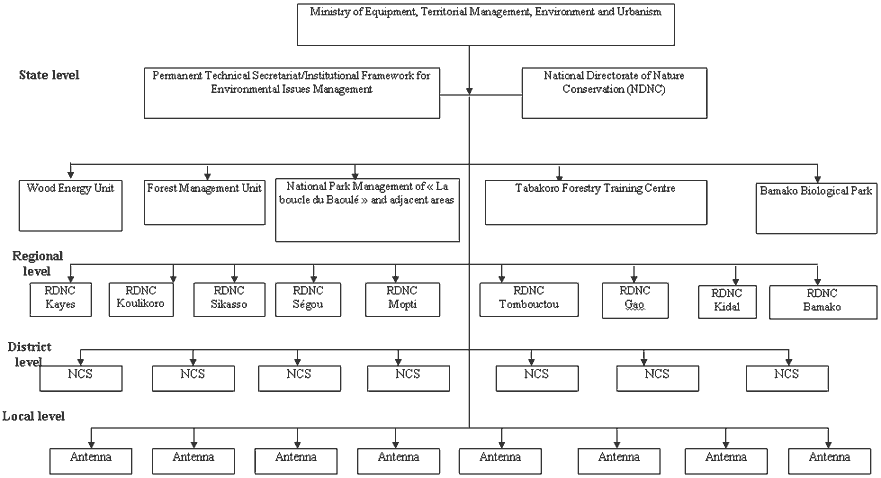
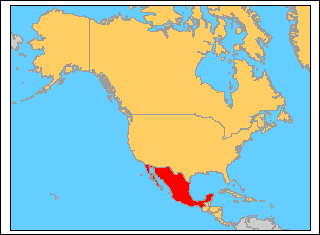
| MAIN SOCIO-ECONOMIC INDICATORS Population: 98 million Population per sq. km: 51.3 Population growth: 1.4 % Poverty (% population below 1$/day): 15.9% Life expectancy (1999): 72.4 years GDP per capita: 5,080 US$ GDP: 574.5 billion US$ |
Mexico is moderately forested with around 30 percent forest and woodland cover. It encompasses a broad range of climatic zones and these give rise to a variety of vegetation and forest types. More than 70 percent of the country is classified as semi-arid, or drier, but Mexico has also wet humid zones, as well as mountain and alpine vegetation. Lowland forest is mainly broadleaved, with significant areas of dry and arid-tropical forest and moist tropical forest on the southern Yucatan peninsula. Inland mountain regions have large areas of mixed coniferous forest, dominated by pine and fir species with a significant proportion of oak. Mexico has more than 2.5 million hectares of forest in protected areas.
| MAIN BIO-PHYSICAL AND FOREST
INDICATORS Surface area: 190.8 million hectares Forest cover: 55.2 million hectares % of land area: 28.9% Forest area per capita: 0,5 hectares Deforestation (annual change 1990-2000): -1.1% Average growing stock: 52 cm/ha Removals: 45.7 million cm Import: 2,728 million US $ Export: 267 million US $ |
Mexico produces important quantities of wood and paper products, mainly for domestic consumption. The majority of the production is softwood, sawn wood and wood-based panels. Mexico’s paper industry relies on secondary fibres from recycling for 80 percent of its fibre needs.
The study analyses the main public policies and instruments that impact positively or negatively on the forestry sector. For example, the Programme of Sustainable Forest Development 2016 and local mechanisms of public policy coordination in the State of Chihuahua are reviewed.
Traditionally, the forestry sector in Mexico has had low priority in policy-making (e.g. a lack of fiscal and direct incentives and low public expenditure in the sector). This situation has been one of the main reasons for the absence of significant investment or interest in forest conservation and development by the sectoral stakeholders. Forest owners, the forest industry and large parts of the rural population have been negatively affected by the low political profile of the sector, in terms of the quantity and quality of services provided by forest resources. However, since 1997 public expenditure in forestry has significantly increased and the federal government initiated a programme of forest incentives to promote the sustainable management of natural forests and the development of commercial forest plantations. These incentives have produced positive impacts on the sector allowing improvement in forest management, increased wood production, training of forest owners and forest workers and creating more employment and income possibilities in forest areas.
Water supply, environmental protection and development policies are the main cross-sectoral issues identified in the study. The lack of adequate intra-sectoral and inter-sectoral public policy coordination mechanisms and legal and institutional frameworks are identified as the main causes of deforestation, forest degradation and poverty. The new federal government is putting emphasis on improving public policy coordination through presidential commissions and different sectoral agency programmes. However, in most cases adequate policy coordination does not occur because favourable preconditions or mechanisms do not exist.
The structure of the Forestry Administration at national and regional levels is presented in Table 2.3. Undersecretaries, the National Institute of Ecology and the National Commission of Natural Protected Areas operate through delegations of the “Secretaría de Medio Ambiente y Recursos Naturales” (SEMARNAT) in each state. The Federal Office for Environmental Protection has its own delegations in each state. In addition, the Secretariat of Agriculture, Livestock, Rural Development, Fishing and Feeding is responsible for federal forest research and promoting commercial forest plantations.
Table 2.3 - Structure of forestry administration at national and regional levels
|
National agency |
Main functions |
Regional agencies |
|
National Forestry Commission |
To develop, favour and impel the productive activities of conservation and restoration in forest matter and in the application of the policy of sustainable forest development. |
Thirteen regional management units concordant with the national division of hydrographical river basins. |
|
National Institute of Ecology |
Research on use and sustainable management of natural resources. |
Delegations of SEMARNAT. |
|
Undersecretary of Management for Environmental Protection |
To execute the acts of authority in forest matter. Evaluation of the environmental and forest impacts. |
Delegations of SEMARNAT in each State. |
|
Federal Office for Environmental Protection |
To watch and sanction the application of the forest and environmental laws. |
Own delegations in each State. |
|
National Commission of Natural Protected Areas |
Administration of the natural protected areas at Federal level. |
Through delegations of SEMARNAT. |
|
Undersecretary of Environmental Legislation |
Forest norms approval. |
Delegations of SEMARNAT in each State. |
In the State of Chihuahua, the Forestry Consultative Council has been a fundamental instrument for stakeholder participation and intra-sectoral coordination. Most ethnic groups in the State of Chihuahua live in forest areas. In order to improve the quality of life of ethnic groups and minimize their pressure on forest resources, better coordination of agrarian, social and sectoral initiatives are recommended. Increased resources to improve the information base on cross-sectoral linkages between forestry and other sectors, in particular with reference to the roles of civil societies and NGOs, and to create a Chihuahua State Forest Service with decentralized functions and resources fully responsible for the development of the forestry sector in coordination with the federal government, are also recommended. Finally, it is proposed that coordination mechanisms designed by the new federal government as well as coordination with the international forest policy dialogue be further strengthened.
Romania
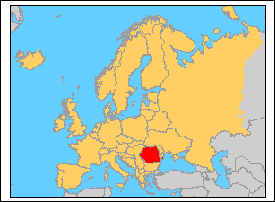
| MAIN SOCIO-ECONOMIC INDICATORS Population: 22 million Population per sq. km: 97 Population growth: -0.3 % Life expectancy (1999): 69.8 years Poverty (% population below 1$/day): 2.8% GDP per capita (US$): 1,670 GDP (US$ millions): 36.6 billion US $ |
| MAIN BIO-PHYSICAL AND FOREST INDICATORS Surface
area: 23.0 million hectares Forest cover: 6.4 million hectares % of land area: 28 % Forest area per capita: 0.3 hectares Deforestation (annual change 1990-2000): 0.2% Average growing stock: 213 cm/ha Removals: 13.1 million cm I mport: 189 million US $ Export: 516 million US $ |
Romania is situated on the western shore of the Black Sea. Its terrain consists mainly of rolling, fertile plains to the east and the Carpathian mountain range in the centre and west. Forest and other wooded land account for less than one-third of the land area, most of it located in the Carpathian mountainous region and the pre-Carpathian hills. Nine-tenths of the forest are available for wood supply and an even higher proportion is semi-natural forest, with only small areas of forest undisturbed by man. Three-fifths of the volume of growing stock are comprised of broadleaved species, mainly beech and oak. Norway spruce is the principal coniferous species. There is a wide diversity of flora and fauna in Romania’s forests. Net increment, which is above the European average, has exceeded fellings by a considerable margin for some decades, leading to an increase of growing stock. Ownership of the forests was formerly entirely by the state, but the process of privatization and restitution is leading to an increase in private and community ownership.
Romanian forests provide sufficient raw material resources for the domestic industry and also for exports. There have been substantial investments in new medium-density fibre (MDF) and particleboard mills as well as in the modernization of older mills which will lead to significant increase in production in the near future.
The country case study analyses main cross-sectoral linkages in forestry which are currently driven by the processes of democratization, transition to a market economy and accession to European Union (EU). With a view to promoting coherent national policies and development planning and improving inter-sectoral collaboration, various government-level institutional mechanisms have been developed over the last decade. According to the law of 2001 on the organization and functioning of the government, the General Secretariat is responsible for coordinating the activities of line ministries and ensuring that the correct legal procedures are observed in the elaboration and endorsement of draft legislation. This law has improved policy coordination. The Ministries of European Integration, Public Administration and Development and Prognosis also play an important role in inter-sectoral coordination, while other ministries have cross-sectoral responsibilities. Some ministries are responsible for several sectors (e.g. agriculture, food and forests; waters and environmental protection; public works, transport and housing, etc.), while others have only one sector under their responsibility (e.g. foreign affairs; national defence; tourism, etc.).
In recent years, the formulation of policy and development planning has been characterized by inter-administrative and government agency cooperation as well as by the involvement of main stakeholders, public participation and transparency. The formulation of the National Forest Policy and Strategy in 2000 is an example of open, transparent and participatory processes (Table 2.4).
Also, the ongoing restitution of forest lands to their former private, communal and institutional owners - it is expected that up to half of Romanian forests will be restored - is inducing a broad range of policy changes in the forestry sector, calling for a redefinition of the role of the state and public forest agencies, mainly the Department of Forests within the Ministry of Agriculture, Food and Forests (MAFF) and the National Forest Administration (NFA), responsible for the administration and management of state forests.
Inter-sectoral coordination |
Cross-sectoral responsibilities |
Multisectoral responsibilities |
Single sector responsibilities |
- Development and prognosis |
- Public finance |
- Work and social solidarity |
- Foreign affairs |
The decision to privatize logging and forest products industries, including retail activities, has also a significant impact on the forestry sector, especially with regard to international trade and environmental standards.
Integrating forest management and planning within the broader context of rural development, agriculture and landscape planning has become an important issue in the context of EU accession. Policies for rural sector development and for road network expansion are seen as the most influential on forest resources management. Civil society is increasingly requesting the coordination of forest policy goals with the objectives of environment, ecotourism, energy and infrastructure policies (Table 2.5).
Strengthening the Department of Forests is seen as a priority in order to increase the capacity of the forestry sector to influence political decision-making processes and macroeconomic policies that have direct impacts on forestry sector development. The impacts of other economic sectors’ policies on the forestry sector could become more effective by engaging the public authority responsible for forests in the development of new relevant legislation initiated by other sectors. In the legislation development process, it is suggested that the Department of Forests enhance its collaboration and dialogue with the main forest stakeholder and interest groups in order to reflect and represent their opinions and interests adequately. It is also proposed that it increase the capacity to coordinate and monitor the development and functioning of private forest districts and to provide extension services through its territorial units in order to ensure sustainable management of private forests.
Finally, it is suggested that the role and mandate of NFA be adapted to the new privatization context enhancing its commercial role as it faces competition from the private sector and that the National Association of Private Forest Owners, an association established in 1998 to represent all private forest owners, be supported in fulfilling its role of services provider to new forest owners. For example, the development of appropriate regulations (and their enforcement), financial mechanisms and alternative income-generating activities in rural areas as well as public awareness campaigns on sustainable management and conservation of forest resources are potential ways of maintaining the ecological functions of the restored forests.
Table 2.5 - Public policy impacts on forestry sector development
|
Public policy domain |
Impact | |
|
Main direction3 |
Impact Scale4 | |
|
Public policies establishing the institutional framework: - Economic growth - Privatization - Public finance - Employment - Rural development and land use planning |
Forest policy impacted Forest policy impacted Forest policy impacted Forest policy impacted Reciprocal links |
*** **** *** ** ** |
|
Public policies related to specific economic sectors: - Agriculture and game management - Wood harvesting, transport and processing - Mining and energy - Infrastructure - Tourism |
Forest policy impacted Reciprocal links Forest policy impacted Forest policy impacted Reciprocal links |
*** **** ** ** *** |
|
Public policies promoting development: - Environmental protection and water management - Nature conservation - Education and research |
Reciprocal links Reciprocal links Forest policy impacted |
**** *** ** |
3 Possible
direction: Forest policy is interfered with; Reciprocal link; Forest policy is
interfering.
4 On a
scale from (* = little impact) to (**** = very significant impact).
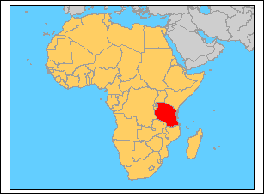
| MAIN SOCIO-ECONOMIC INDICATORS Population: 33.7 million Population per sq. km (1997): 38 Population growth: 2 % Life expectancy (1999): 51.1 years Poverty (% population below 1$/day): 19.9% GDP per capita: 280 US$ GDP: 9.3 billion US$ |
| MAIN BIO-PHYSICAL AND FOREST INDICATORS Surface
area: 88.3 million hectares Forest cover: 38.8 million hectares % of land area: 43.9% Forest area per capita: 1.2 hectares Deforestation (annual change 1990-2000): - 0.2% Average growing stock: 43 cm/ha Removals: 23.1 million cm Import: 9.9 million US $ Export: 5.3 million US $ |
Tanzania has around 44 percent forest cover and an additional area of other wooded land. Tanzania has relatively small areas of closed forest with the bulk of these being mountain or sub-mountain forests. Lowland closed forests are generally semi-deciduous secondary forest, bamboo or mangroves. Open forests are much more extensive with "miombo" woodland being the predominant type. The extensive Itigi thicket comprises a large area of shrubland on the central plateau.
Tanzania has established significant areas of plantation forest with Pinus spp. and Cupressus lusitanica. It has an extensive network of national parks, game reserves and game controlled areas. Around 15 percent of Tanzania's forests are inside protected areas.
Most wood harvested in the country is used for fuel. Tanzania produces sawn wood, softwood pulp and paper from local raw material. The bulk of the industrial roundwood harvest is utilized for posts, poles and other agricultural purposes.
The study describes recent macroeconomic policy changes, the national poverty eradication strategy and decentralization and privatization processes as they influence forestry sector development. Specific policy options and institutional arrangements are discussed in relation to SFM.
The major sectoral policies that have a bearing on forestry include those relating to the environment, livestock, energy, beekeeping, wildlife, minerals, agriculture, water, health and gender. A number of cross-cutting issues among these policies have implications on the sustainable management of forest resources (Table 2.6).
The Ministry of Natural Resources and Tourism is responsible for forestry, beekeeping, fisheries and game. The government’s current administrative and political decentralization policy has had two main effects. At the ministerial level, the roles and functions of ministries now focus mainly on policy formulation, monitoring and evaluation and regulation. At the regional level, the main feature of the new set-up is the establishment of a team of sector experts who form the regional secretariat. Regional secretariats are to provide support to local government authorities and other stakeholders, advise the regional consultative councils and develop inter-sectoral collaboration and coordination in order to improve rational resource utilization and efficiency.
The main reasons for deforestation relate to poverty and arise from attempts to meet basic needs. They include clearing for agriculture, overgrazing, wildfires, charcoal burning and overexploitation of wood resources. The consequences have been a loss of biodiversity and a general decline in forest products and services, such as fuelwood and water catchment protection. The integration of the national economy into the world market and the intensification of agriculture to meet new market demands for export crops, have also contributed to an accelerated conversion of woodland areas to crops and pasturelands. In addition, the sudden and large-scale inflow of refugees into border districts has created major ecological, social and environmental problems.
Table 2.6 - Important cross-sectoral issues and implications
|
Cross-sectoral issues |
Implications |
|
Environment • Environmental degradation • Degradation of land, water and vegetation • Conserving and enhancing biodiversity of unique ecosystems • Improving the degraded areas |
• Environmental consideration in all land and forest development activities • Closer coordination and cooperation in the environment agenda at the local, national, regional and global levels |
|
Energy • Ensuring environmentally sustainable energy supply • Promotion and dissemination of affordable energy technologies |
• Expanded supply of wood fuel • Availability of alternative sources of energy supply • Reduction in forest loss for wood fuel, sustainable utilization |
|
Agriculture • Deforestation related to agriculture • Non-harmonized extension services • Conflicting land use planning |
• Improved agricultural production through coordinated extension service and integrated land use • Enhanced food security |
|
Health • Collaborative management of sites of useful species and research on the usefulness of plant species |
• Increasing utilization of plant species in medicine from biodiversity conservation |
|
Land • Land tenure, ownership and land-use conflicts versus SFM • Land use planning for forest development activities |
• Participatory land use planning • Definition of ownership and tenure rights • Close collaboration and coordination in land development activities • Demarcation of forest land to facilitate operations of the private sector and specialized agencies |
|
Mineral • Conflicts related to land use • Environmental conservation with respect to mineral sector development |
• Reduction in conflicts related to land use for mining activities • More environmentally friendly technologies applied |
|
Water • Conflicting interests in water resources management |
• Participatory management of watersheds through reduction of conflicts |
|
Wildlife • Conflicting interests in land use and fragmented institutional framework |
• Harmonizing conflicts in land use, wildlife and forest areas • Improved coordination in management of overlapping forest/wildlife interests • Sustainable management of wildlife/forest biodiversity |
|
Gender • Increased desertification caused by unsustainable utilization of forests and environmental degradation |
• Poor crop yields, increased workload and women walking longer distances to fetch fuelwood and water |
The Government of Tanzania has attempted to curb the problem of deforestation and forest degradation by promoting village and community forestry with the objective of self-sufficiency. Despite these efforts, environmental degradation continues at a fast rate.
Policy options available to the country and discussed in the case study are:
• encouragement of private sector participation;
• expansion into international markets;
• investment in health and education;
• investment in capital and infrastructure;
• improvement of economic management through the market
economy;
• facilitation of devolution and empowerment
policy to local governments;
• promotion of gender
balance and addressing inequality across all frontiers;
• support to poor people’s social capital;
• prevention of civil conflict.
These policy options have been operated through the implementation of a number of institutional reforms, including: revision of the national forest policy; revision of the forest legislation; a national forestry programme (nfp) strategy; community-based forest management; development of best practices for SFM; and development of national criteria and indicators (C&I) for SFM. In addition, the drive has been to privatize most government-owned enterprises. Positive results have become evident in most of the privatized ventures as output has improved.
The case study recommended that policies and rules governing land use and tenure be reviewed; that the legal basis on which village surveying, demarcation and titling takes place be stipulated in order to ensure recognized systems for the resolution of disputes over place and access; that nfp information be disseminated and that the start-up of district nfp planning and implementation be promoted; and that capacity building through training and education in local governments and in the private sector to which management is being transferred be reinforced.
Thailand
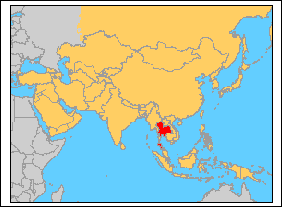
Thailand is today moderately forested and its forest cover has roughly halved since 1960. It has at present slightly less than 30 percent forest cover. Most of the forests are restricted to relatively inaccessible mountainous areas. The main forest types are evergreen mountain rain forest, mixed deciduous monsoon forest and open dry dipterocarp and savannah forests. Teak (Tectona grandis) has generally been the most important timber species.
| MAIN SOCIO-ECONOMIC INDICATORS Population: 60.7 million Population per sq. km: 118.9 Population growth: 0.8 % Life expectancy (1999): 69.9 years Poverty (% population below 1$/day): 2.0% GDP per capita: 2,010 US$ GDP: 121.9 billion US$ |
Since 1989, Thailand has had a ban on all logging in natural forests and has implemented a series of supporting measures to protect the remaining forests and to promote private sector involvement in forest management and plantations. It has more than half a million hectares of plantation forests. A network of parks and reserves encompasses more than 10 percent of the total land area.
| MAIN BIO-PHYSICAL AND FOREST INDICATORS Surface
area: 51.3 million hectares Forest cover: 14.7 million hectares % of land area: 28.9% Forest area per capita: 0.2 hectares Deforestation (annual change 1990-2000): - 0.7% Average growing stock: 17 cm/ha Removals: 23.4 million cm Import: 1,323 million US $ Export: 855 million US $ |
Thailand’s primary sources of industrial wood are plantation forests, non-forest trees, agricultural tree crops (particularly rubber wood) and imports. The country produces significant quantities of sawn timber, wood-based panels and paper. Furniture manufacturing is an increasingly important industry. Imports of logs, sawn wood, short- and long-fibre pulp and recovered paper are important constituents of Thailand’s wood processing sector.
The study addresses the institutional web of pressures and influences that are at work in the continuing transformation of patterns of livelihood and land use in the rugged and multicultural Thai uplands. Population expansion, state enclosure of forests and competing land claims by diverse stakeholders have created strong interlinks and conflicts between the upland and lowland zones. Key sectors considered are forestry, national security, agriculture and tourism. Highland development projects in northern Thailand have contributed to the integration of remote and semi-subsistence-based mountain villages into a rapidly changing regional, national and global economic environment. The consequences of these changes on mountain communities and the biophysical environment have been profound.
Most relevant cross-sectoral issues discussed are the following:
- expansion of the highland population, with an
increasing land scarcity as ethnic minority groups, originally from China, have
come into conflict with long established local communities;
- increased presence of lowland farmers and investors in
mountain areas;
- establishment of forest enclosures by
the state authorities, nominally for conservation of forest resources, with a
huge expansion of national parks, wildlife sanctuaries and watershed protection
zones;
- reduced forest land availability, also as a
consequence of forest enclosures;
- decreased fallow
length and related problems of soil fertility loss and food insecurity;
- opium cultivation eradication policies balanced by a
plethora of government, bilateral and international highland development
projects for crop replacement.
As regards mountain development, an integrated community approach was promoted in the 1990s as a means to stop deforestation and to improve the standard of living of the people who depend on the forests. Conflicts over forest between people and the state, and among people over water usage, often arise. Conflicts over forests involve state policies and actions limiting local access and increasingly assertive villagers demanding rights to land and natural resources. The ninth Development Plan and the 1992 National Environmental Quality Enhancement Act have been prepared by convening meetings with different interest groups and stakeholders in every region of the country, including representatives of the grassroots, and have been hailed as being people-centred. It has therefore become a synthesized aspiration of the multistakeholders even if it is considered as lacking prioritization of strategies, programmes or projects.
The emergence of state and local cooperation is seen as the key to answering environmental and social problems in the uplands of Thailand. Decentralization supported by civil societies was a major theme in the 1997 constitution. Nevertheless, the effectiveness of the new Tambon Administrative Organizations (TAO) in devolving power to the grassroots and, most significant for upland areas, giving local people a voice in the management of natural resources, is still controversial. The lack of personnel, monitoring capacity and people’s participation in the management of local resources means that important natural resources continue to remain under de facto if not de jure open access. This has clearly led to the abuse of forest, water and aquatic resources.
The study concludes that the current command-and-control philosophy of Thai natural resources administrations (Table 2.7) still tends to implement policies that ignore the potential of mountain communities to work towards sustainable development. They preclude many potential options for sustainable development. The authors recommended that policies be adopted that link land tenure with sustainable land use, promote human security and encourage collaborative activities and research among diverse stakeholders like villagers, academics, state authorities and NGOs.
Table 2.7 - Government agencies with environmental management responsibilities
|
Ministry-level agencies |
Total number of agencies |
Number of agencies with environmental-management responsibilities | ||||
|
|
Department/Office |
State enterprise |
Total |
Department/Office |
State enterprise |
Total |
|
Prime Minister’s Office |
21 |
7 |
28 |
8 |
4 |
12 |
|
Defence |
6 |
3 |
9 |
1 |
- |
1 |
|
Finance |
7 |
9 |
16 |
3 |
- |
3 |
|
Foreign |
12 |
- |
12 |
1 |
- |
1 |
|
Agriculture and cooperatives |
12 |
7 |
19 |
10 |
2 |
12 |
|
Transport and communications |
8 |
11 |
19 |
4 |
2 |
6 |
|
Commerce |
8 |
1 |
9 |
3 |
- |
3 |
|
Interior |
9 |
7 |
16 |
8 |
4 |
12 |
|
Justice |
9 |
- |
9 |
- |
- |
0 |
|
Labour and social welfare |
6 |
- |
6 |
1 |
- |
1 |
|
Science, technology and environment |
8 |
2 |
10 |
8 |
2 |
12 |
|
Education |
14 |
2 |
16 |
3 |
- |
3 |
|
Public Health |
7 |
1 |
8 |
6 |
- |
6 |
|
Industry |
6 |
3 |
9 |
2 |
2 |
4 |
|
University Affairs |
21 |
- |
21 |
- |
- |
0 |
|
Total |
154 |
53 |
207 |
58 |
16 |
74 |
Source: Office of Environmental Policy and Planning, 2001.
LESSONS LEARNT
Institutional weaknesses in the forestry sector and a too marginal role in public decision-making processes related to macroeconomic and rural development policies were identified as the most common elements mentioned in all case studies. These problems cannot be solved by trying to protect and isolate the forestry sector. On the contrary, there is an urgent need to look for better recognition of the significant economic and social values of forest resources and their role in the sustainable well-being of communities.
The country case studies also unveiled two important aspects of cross-sectoral policy impacts: the level of policy decision-making and the type of institutional coordination mechanisms or approaches. Concerning the level of policy decision-making, a distinction can be made between international, regional1 (e.g. the Council of Europe, the Ministerial Conference on the Protection of Forests in Europe or area free trade agreements), national and sub-national or local political arenas. Three levels of coordination may be defined:
• inter-sectoral (or horizontal) coordination, when problems are considered mainly at the same territorial level by actors operating in different sectors,
• infra-sectoral (or vertical) coordination, when coordination is based mainly on interactions among actors operating at different levels but in the same sector, and
• multilevel cross-sectoral coordination, linking international and national efforts.
Public involvement in forestry policy coordination takes different forms according to socio-economic and institutional contexts (Table 2.8):
Forest policies, programmes and plans. These processes introduce public involvement at an early stage of decision-making in order to anticipate conflicts and to enhance transparency and social acceptance of policies, strategies or plans. Their implementation is largely the task of national or regional forest services but others actors have increasingly an important role to play.
Promotion of public involvement in specific forest projects. Public participation aims at promoting or increasing direct public involvement of stakeholders in the implementation of specific forest projects as, for instance, the creation of urban green spaces, afforestation projects and the prevention of forest fires.
Public auditing of forestry projects and practices. Public participatory processes refer to formal procedures of public consultation about specific practices or projects, e.g. environmental/social impact assessments. They are often based on legal requirements but also result from voluntary codes of practice.
Advisory boards/council for public advice or management of conflicts. Advisory boards or councils are permanent fora that help the public to be better informed and to have a more direct influence in forestry-related matters. They group various – mainly organized – interest groups and can be found at different political levels.
Table 2.8 – Types of public involvement in forestry policy coordination
|
1. Forest policies, programmes, plans |
2. Promotion of specific projects |
3. Public audits of projects/practices |
4. Advisory boards/permanent councils | |
|
National level |
- National forest programmes or strategies - Definition of national sustainable forest management standards - Forest Council - Framework for public involvement in forest management |
- Forest education and awareness raising projects |
- Environmental or/and social impact assessment - Nature complaints boards - Public audits of private enterprises - Citizens’ juries |
- Forest council and advisory boards or commissions - Round table with forest industry, environmental groups - User Councils |
|
Sub-national level |
- Longer term regional forest or natural resources planning - Landscape ecosystem level planning |
- Planning and implementation of afforestation programmes/projects |
- Regional forestry commissions - Permanent advisory councils | |
|
Local level |
- Management planning at forest unit level - Nature protection and recreation planning - Real estate planning - Management of community woodlands - City and communal land and forest use practices |
- Groups of private forest owners - Regulation for forest contractors/merchants - Creation of new forest zones in urban areas - Partnership for the provision of local amenities - Prevention of forest fires - Community-based forestry schemes |
- Allocation of public grants and subsidies for specific forestry operations |
- Partnership with users’ organizations - Community based |
Source: International Labour Organization (2000)
There is need for pragmatic stages, whether legislative, strategic or operational, to determine in which manner the involvement of stakeholders can be ensured. The degree of involvement may range from exchange of information, consultation and joint decision-making to full public participation in forestry decision-making. Public participation processes are dynamic and change from one process to another over time. Some are short-lived; others turn into more permanent arrangements.
The institutional levels, stages in decision-making or implementation and intensity of public participation processes depend on the issues, the objectives of the initiators and participants and on the cultural, political and institutional context. Most case studies focused the analysis at the level of infra-sectoral or multilevel cross-sectoral coordination problems, mainly with reference to the process of decentralization and devolution.
As regards institutional coordination mechanisms, five approaches have been singled out which are not necessarily mutually exclusive:
• market, where decisions related to resources allocation are based on the price system i.e. on financial costs and revenues deriving from various economic activities;
• hierarchy, where a responsible organization or authority defines the main lines of policy, establishes priorities and is responsible for inter- and infra-sectoral decision-making;
• “comitology”, where joint committees, project teams or expert groups - whose members are expected to be representative of different stakeholders – are responsible for negotiating internally the matters related to coordination problems;
• participation, where the concerned stakeholders, comprehensively involved, are given formally or informally the responsibilities in negotiating and implementing policies;
• institutional coordination, where formal rules/responsibilities are defined in order to prevent overlapping and interference among actors.
Table 2.9 summarizes coordination mechanisms and presents some of their advantages and disadvantages.
Table 2.9 – Advantages and disadvantages of coordination mechanisms
|
Mechanism |
Advantage |
Disadvantage |
Country example |
|
Market |
No public transaction costs. All actors involved. |
Exclusive of non-market benefits. |
Brazil: “Green Protocol” linking public credit lines to environmental standards |
|
Hierarchy |
Rapidity and cost effectiveness |
Limited stakeholder support and transparency. |
Tanzania: Regional secretariats |
|
Comitology2 |
Integration of different competences/interests and cost effectiveness |
Limited representativeness and transparency. |
Romania: Ministry of European Integration |
|
Participation |
All actors are involved in negotiated solutions |
High cost and lengthy process |
Italy: Local Action Groups co-financed by the EC and involving private and public stakeholders |
|
Institutional coordination |
Transparent and clearly defined responsibilities. Limited costs. |
Do not always prevent or reduce conflicts and needs for coordination |
Thailand: Tambon administrative organizations |
Abrudan, L. (2002). Cross-sectoral linkages in Romanian forestry. Report prepared for the FAO Forestry Department, Policy and Planning Division, Policy and Institutions Branch. Rome.
Buttoud, G. (1992). Forest policy. Challenges and strategies for Mediterranean woodlands. INRA-ENGREF, Nancy and MAICH-ICAMAS, China.
Carvalho Mendes, A.M.S. (2002). Financial and other economic instruments as supporting and improving factors of national forest programmes. Discussion paper prepared for Working Group 2 sessions of the COST Action E19 Seminar "Cross-sectoral policy impacts on forests", Savonlinna, Finland, 5-6 April 2002.
Hogl, K. (2002). Reflections on inter-sectoral coordination in NFP processes. Draft. BOKU-Institute of Forest Sector Policy and Economics. Vienna.
Humberto, A. & Carlos do Prado, A. (2002). Brazil case study on cross-sectoral linkages in forestry: the case of the Amazon forest. Report prepared for the FAO Forestry Department, Policy and Planning Division, Policy and Institutions Branch. Rome.
Johnson, P.W. (1996). The natural resources c onservation service: changing to meet the future. Journal of Forestry, 94 (1), 12-16.
Konaté, G. (2002). Etude des liens intersectoriels et l’aménagement durable des forêts au Mali. Report prepared for the FAO Forestry Department, Policy and Planning Division, Policy and Institutions Branch. Rome.
International Labour Organization (2000). Public participation in forestry in Europe and North America. Report of the FAO/ECE/ILO Joint Committee Team of Specialists on Participation in Forestry. Working Paper 163. Geneva.
Mingsarn, K. & Rutherford, T.J. (2002). Cross-sector linkages in mountain development: the case of northern Thailand. Report prepared for the FAO Forestry Department, Policy and Planning Division, Policy and Institutions Branch. Rome.
Miranda, M.L., Corrales, O.M., Regan, M. & Ascher, W. (1992). Forestry institutions. In: Sharma, N.P., ed. Managing the world’s forests - looking for balance between conservation and development. Kendall/Hunt, Dubuque.
Monela, G. (2002). The study of the influences of external policies on forest development in Tanzania. Report prepared for the FAO Forestry Department, Policy and Planning Division, Policy and Institutions Branch. Rome.
Nkhata, D. (1997). The status of forest resources management and its problems in Zambia. Paper presented to the XI World Forestry Congress, Antalya, 13-22.10.1997.
Pettenella, D., Andrian, G., Musumeci L. & Secco, L. (2002a). Cross-sectoral linkages in mountain development – the case of Belluno, Bolzano and Trento Northeastern Provinces of Italy. Report prepared for the FAO Forestry Department, Policy and Planning Division, Policy and Institutions Branch. Rome.
Pettenella, D., Andrian, G., Musumeci, L. & Secco, L. (2002b). Country case study summary review. Report prepared for the FAO Forestry Department, Policy and Planning Division, Policy and Institutions Branch. Rome.
Rayner, J., Howlett, M., Wilson, J., Cashore, B. & Hoberg, G. (2001). Privileging the sub-sector: critical sub-sectors and sectoral relationships in forest policy-making. Forest Policy and Economics, 2 (3-4).
Rebugio, L.L. (1997). Paradigm shift: the key to sustainable forestry. Paper presented to the XI World Forestry Congress, Antalya, 13-22.10.1997.
Sabatier P., Loomis J. & McCarthy, C. (1996). Policy attitudes and decision within the forest service: is there a connection? Journal of Forestry, 94 (1), 42-46.
Sosa Cedillo, V. (2002). Impacto en el sector forestal de políticas externas - Estudio de caso de México con especial referencia al estado de Chihuahua. Report prepared for the FAO Forestry Department, Policy and Planning Division, Policy and Institutions Branch. Rome
1 For
example, the Council of Europe, the Ministerial Conference on the Protection of
Forests in Europe or area of free trade agreements.
2 Comitology is the coordination mechanism
used by the European Commission to implement legislation at the European
Community level. Each legislative instrument specifies the scope of the
implementing powers granted to the Commission and how the Commission is to use
them. In practice, the Commission is assisted by a committee in accordance with
a procedure known as “comitology”. The committees consist of representatives
from Member States and are chaired by the Commission. They enable the Commission
to establish a dialogue with national administrations before adopting
implementing measures.